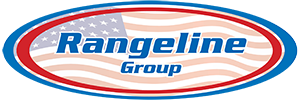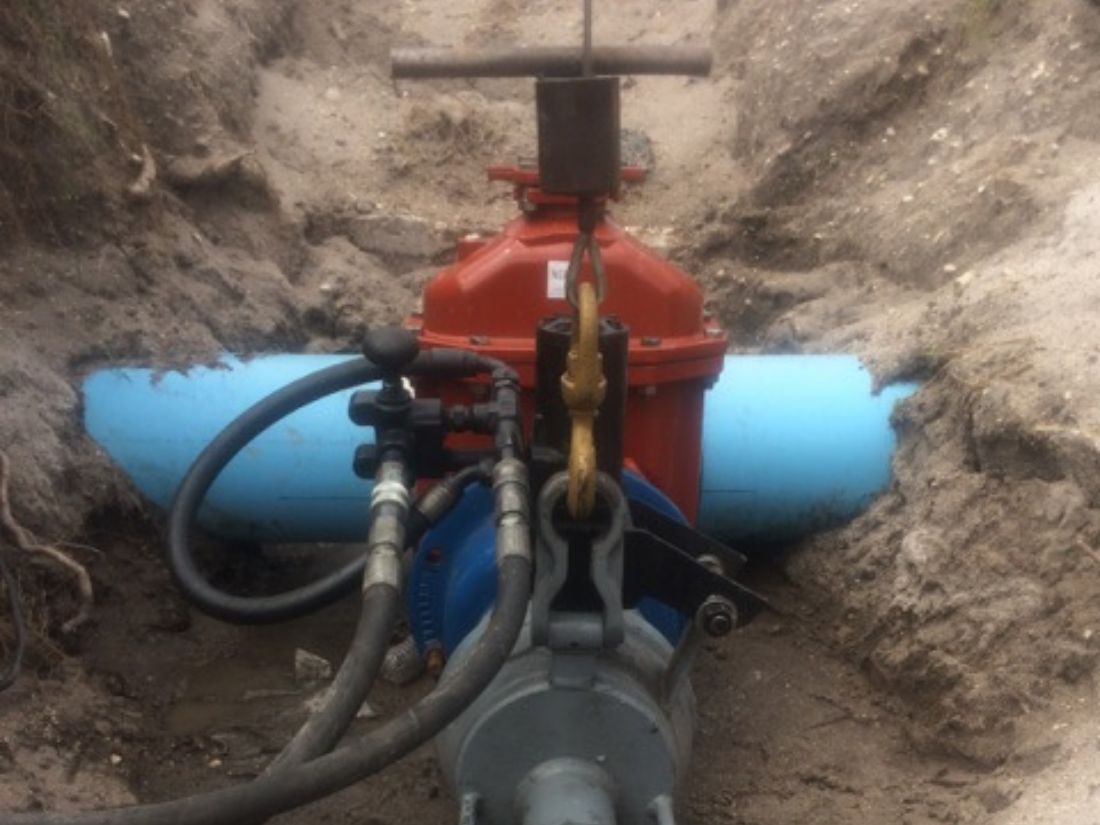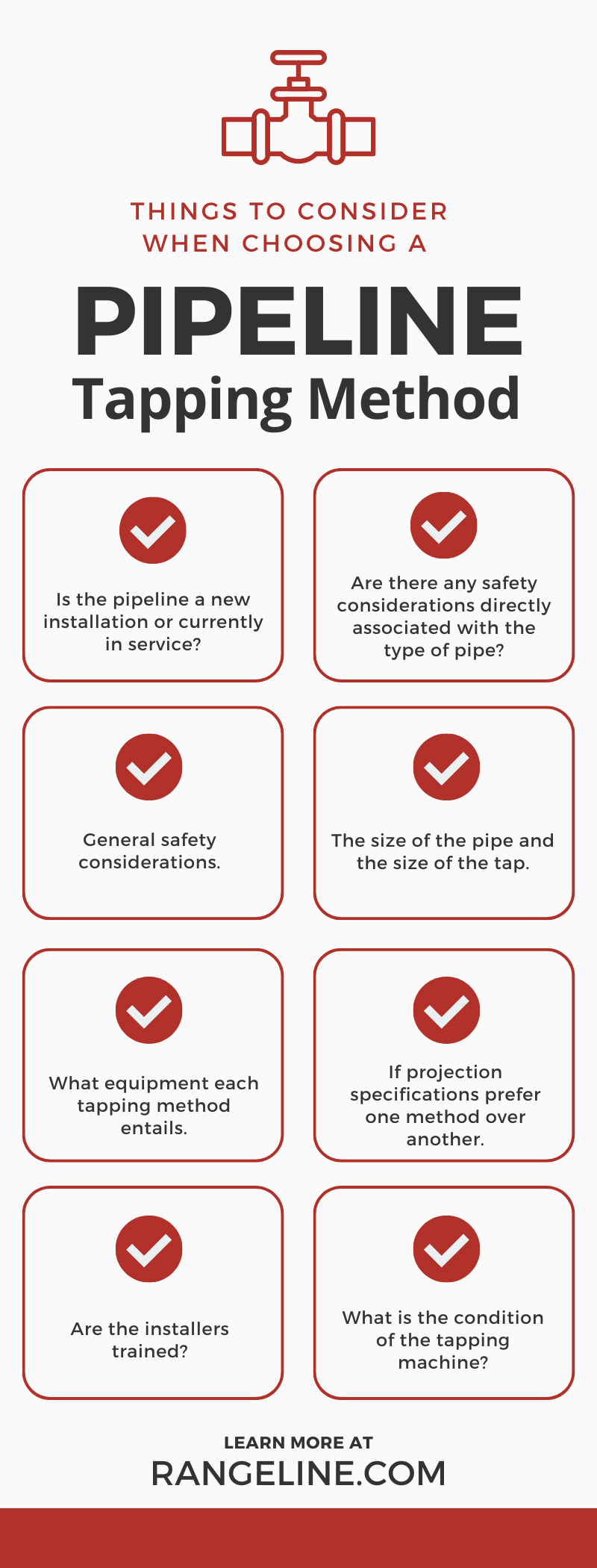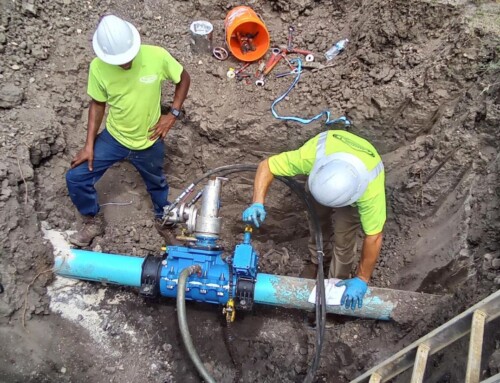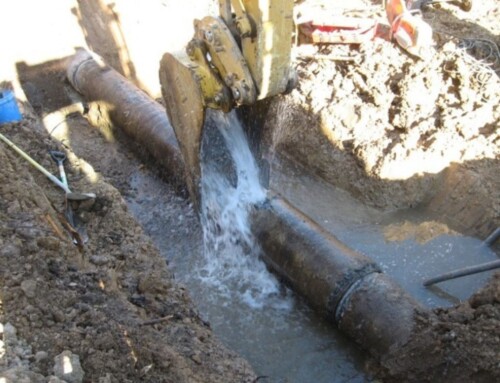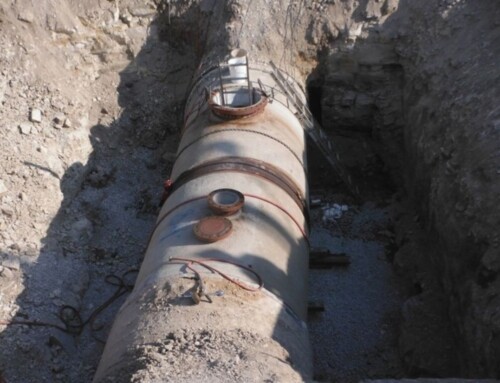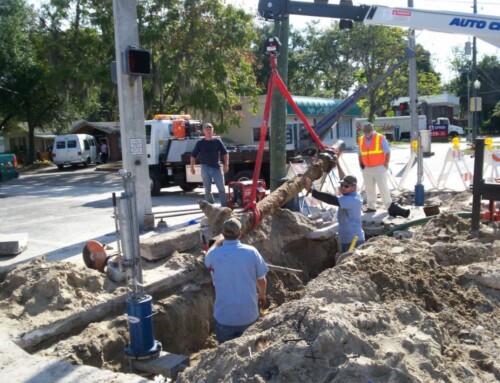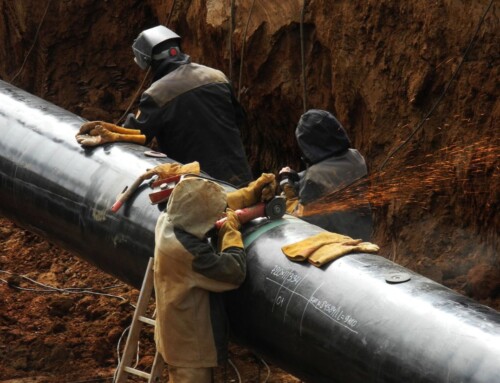Pipelines are so crucial to providing our society because they provide basic resources, such as water and energy. They can’t afford to be interrupted for even a moment, or hundreds of thousands of homes and businesses will be without their necessities. But how do we avoid this while also maintaining and expanding pipelines? The answer is tapping. Also known as hot tapping or wet tapping, tapping is a method that allows pipes to be worked on without interrupting service. To ensure you employ the right form of tapping, here are some things to consider when choosing a pipeline tapping method.
How Does Tapping Work?
Hot tapping is the process of tying a utility into a pressurized pipeline by safely cutting or drilling into an existing pipe through a tapping sleeve and tapping valve. In all methods, it involves placing a tapping sleeve onto the water main in addition to a gate or ball valve to control the flow pressure within. This means the water or other resources can continue to flow under pressure without interruption or having to empty the pipe. This ensures the pipeline remains functional and doesn’t deprive anyone of water or energy while still allowing the pipeline to be modified or repaired. Additionally, because there’s no need to empty out the pipe for repair or modification, the tapping process saves a lot of time.
Key Considerations for Method Selection
Before we get into the different methods, let’s first establish our criteria for what we should consider when choosing a pipeline tapping method.
- Is the pipeline a new installation or currently in service?
- Are there any safety considerations directly associated with the type of pipe?
- General safety considerations, including location, the trench box, or the type of drill being used.
- The size of the pipe and the size of the tap.
- What equipment each tapping method entails.
- If projection specifications prefer one method over another.
- Are the installers trained? How much experience do they have?
- What is the condition of the tapping machine? Has it undergone maintenance?
With these factors in mind, we can now look at each tapping method and determine what scenarios each method would excel at.
Direct Tapping
The direct tapping method involves tapping threads into the pipe wall and inserting a corporation stop. Corporation stops, or corp stops, are a device designed to inject chemical solutions into mains, process systems, tanks, and cooling towers. This is a necessary part of the process to clean and maintain the pipe when draining it is not an option. Typically, to insert a corporation stop, a hole is drilled into the pipe, and the threads are cut using the same bit.
Depending on whether the pipeline is a new installation or an existing one, there are two methods for direct tapping. A dry tap can be done after the required hydrostatic tests for a new line that has not yet been placed in service. The advantage of this method is that it has shorter lead times, reduces the risk of leaks, is less time-consuming, and is typically cheaper.
If the pipeline is in service and under pressure, a wet tap will be needed, which is the process of connecting new services to an existing pipeline without interrupting service at any point. In fact, water lines that have been in service longer than their project service lifespan will be used until their replacement has been installed.
Direct taps can be performed on any diameter of ductile iron pipe, but PVC pipes are another story. Direct taps should only be performed on AWWA C900 pressure class 150 and 200 pipes. These diameters are 6 inches and 12 inches, respectively.
Saddle Tapping
Saddle tapping is a process that uses corporation stops to install a service line to a main. The corporation stop is first screwed into a metal saddle that then wraps around the pipe. Equipment is attached to the corporation stop after the saddle is put in place, which permits a cutting tool to be fed through the stop for the purpose of cutting a hole in the pipe. During this process, there’s no need to thread the pipe wall because the corporation stop fulfills that role—being “threaded” into the tapping saddle.
Because saddles wrap around the pipeline, it’s especially crucial to consider the pipe’s standard dimension ratio. If an HDPE pipe has an SDR number greater than 17, the wall thickness is thinner and can be subject to flexing.
Some other considerations pertain to the saddle or clamp itself if you’re not working with ductile iron pipes. The tapping saddle should never have:
- Lugs that ding and dent the pipe when the saddle is tightened
- A clamping arrangement that isn’t contoured to the outside diameter of the pipe
- A U-bolt type strap that does not provide enough bearing area
Tapping Sleeves
Lastly, we have tapping sleeves. Tapping sleeves provides access to an existing water main and make it possible to branch from them. Tapping sleeves provide the benefits of size and stability, as the branch’s sizing may far exceed what direct tapping can handle. Furthermore, tapping sleeves are typically the preferred option for PVC and HDPE pipes because of the sleeve length. The length lends to greater hoop strength that exceeds the strength of the pipe. The tradeoff of tapping sleeves is that they’re costlier to make and typically take longer to install.
Concluding Thoughts
Of the methods we’ve examined, direct tapping is the most used of the lot. Direct tapping is a lot more cost-effective and efficient in its use of materials. Installing direct taps is also easier and less time-consuming. You won’t run into the problem of working with dissimilar metals in ductile iron systems. However, all three options are equally viable, and all may be necessary depending on the circumstances and needs of the pipeline you’re working on. To learn more about tapping methods or to speak with professionals that can assist you with hot tapping, get in contact with Rangeline Group today! Our team of experts would be happy to assist you in any way possible.
